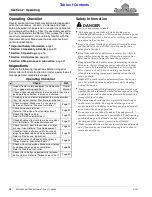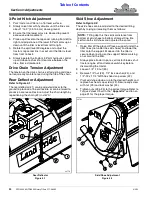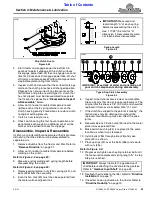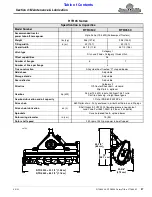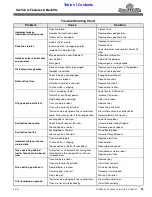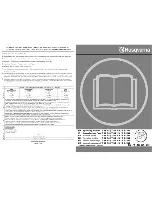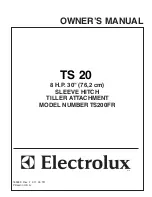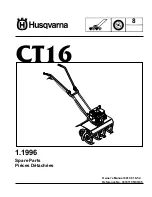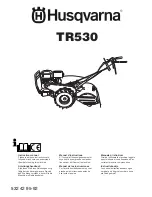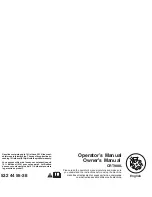
Section 4: Maintenance & Lubrication
RTR0542 & RTR0550 Rotary Tillers 311-464M
3/2/22
23
Slip Clutch Run-In
Figure 4-43
4. Start tractor and engage power take-off for 2-3
seconds to permit slippage of the clutch surfaces.
Disengage power take-off, then re-engage a second
time for 2-3 seconds. Disengage power take-off, shut
off tractor, and remove key. Wait for all components to
stop before dismounting from tractor.
5. Inspect clutch and ensure that the scribed markings
made on the clutch plates have all changed position.
Slippage has not occurred if any two marks on the
friction disk and plate are still aligned. A clutch that
has not slipped must be disassembled to separate
the friction disk plates. See
below.
6. Allow clutch to cool to ambient temperature and
tighten each of the 8 spring retainer nuts on the
clutch housing exactly 2 revolutions to restore clutch
to original setting pressure.
7.
Clutch is now ready for use.
8. Check clutch during the first hour of operation and
periodically each week. An additional set of scribe
marks can be added to check for slippage.
Disassemble, Inspect & Reassemble
If clutch run-in indicated that one or more of the friction disks
did not slip, then the clutch must be disassembled to
separate parts.
1. Remove driveline from the tractor and tiller. Refer to
2. Allow clutch to cool to ambient temperature before
working on the clutch.
Refer to Figure 4-4 on page 23:
3. Measure and recording each spring length before
disassembling the clutch.
Refer to Figure 4-5 on page 23:
4. Remove spring retainer nuts (#9a), springs (#2), and
bolts (#9b) from the assembly.
5. Each friction disk (#5) must then be separated from
the metal surface adjacent to it.
24501
Spring Length
Figure 4-4
Type A Slip Clutch Assembly
Figure 4-5
6. Inspect all parts for excessive wear and condition.
Clean all parts that do not require replacement. The
original disk thickness is 1/8" (3.2 mm) and should be
replaced if thickness falls below 3/64" (1.1 mm).
7. If the clutch has slipped to the point of “smoking”, the
friction disks may be damaged and should be
replaced. Heat build-up may also affect the yoke
joints.
8. Reassemble each friction disk (#5) next to the metal
plate it was separated from.
9. Make certain bushing (#4) is replaced in the same
location as when it was removed.
10. Install bolts (#9b) through plate (#8) and yoke
plate (#3) as shown.
11. Place springs (#2) over the bolts (#9b) and secure
with nuts (#9a).
Refer to Figure 4-4:
12. Progressively tighten each spring retainer bolt until
the measured compressed spring length “A” in step
Step 3 is reached.
13. Reattach the driveline to the tiller. Refer to
14. If needed, hook-up driveline to the tractor. Refer to
IMPORTANT:
Measured and
record length “A” of each spring
before disassembling the clutch.
Use 1 11/32" (34 mm) for “A”
dimension if measurements were
not taken before disassemble.
35965
23844
IMPORTANT: Keep
track of order and orientation of
your clutch components during disassembly
IMPORTANT:
Always lubricate the gearbox input
shaft before reattaching the driveline to the gearbox.
Refer to








